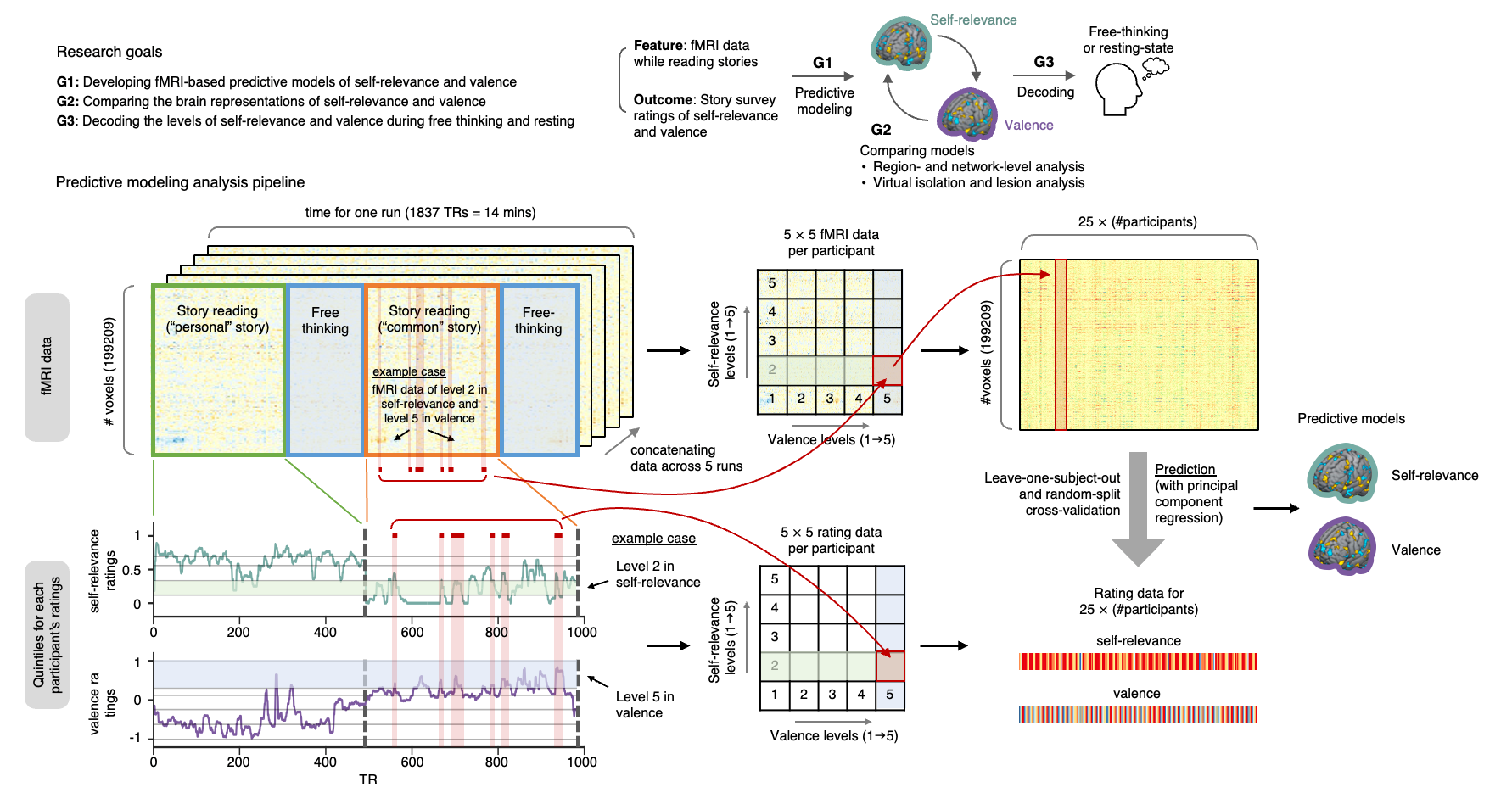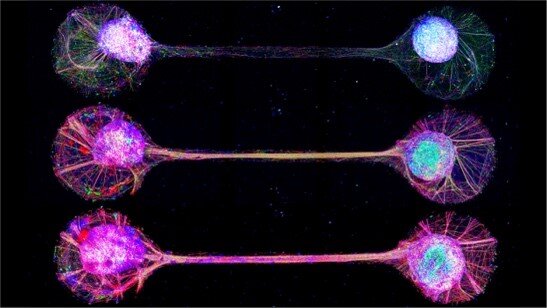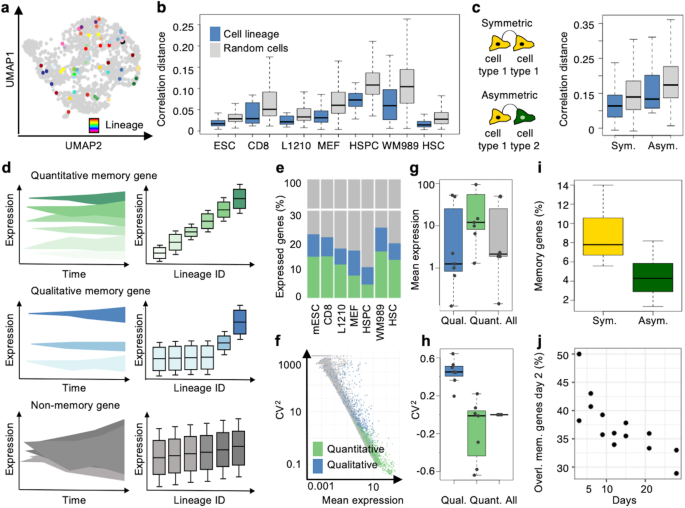2024-04-11 韓国基礎科学研究院(IBS)

Figure 1. Predictive modeling analysis pipeline
<関連情報>
- https://www.ibs.re.kr/cop/bbs/BBSMSTR_000000000738/selectBoardArticle.do
- https://www.pnas.org/doi/10.1073/pnas.2401959121
自発的思考の脳内デコーディング: パーソナル・ナラティブを用いた自己関連性と価性の予測モデリング Brain decoding of spontaneous thought: Predictive modeling of self-relevance and valence using personal narratives
Hong Ji Kim, Byeol Kim Lux, Eunjin Lee, +1, and Choong-Wan Woo
Proceedings of the National Academy of Sciences Published:March 28, 2024
DOI:https://doi.org/10.1073/pnas.2401959121
Significance
Spontaneous thought provides valuable insights into our internal states and context, but assessing its contents and dynamics is challenging due to its unconstrained nature. We addressed this challenge by developing functional MRI-based predictive models for two crucial content dimensions (i.e., self-relevance and valence) of spontaneous thought. Using personalized narratives as stimuli, we evoked cognitive and affective responses resembling real-life experiences. Our models were able to predict the levels of self-relevance and valence ratings during story reading and resting state, contributing to brain-based daydream decoding. These results hold significant implications for understanding individual differences and assessing mental health, shedding light on the study of internal states and contexts that shape our subjective experiences.
Abstract
The contents and dynamics of spontaneous thought are important factors for personality traits and mental health. However, assessing spontaneous thoughts is challenging due to their unconstrained nature, and directing participants’ attention to report their thoughts may fundamentally alter them. Here, we aimed to decode two key content dimensions of spontaneous thought—self-relevance and valence—directly from brain activity. To train functional MRI-based predictive models, we used individually generated personal stories as stimuli in a story-reading task to mimic narrative-like spontaneous thoughts (n = 49). We then tested these models on multiple test datasets (total n = 199). The default mode, ventral attention, and frontoparietal networks played key roles in the predictions, with the anterior insula and midcingulate cortex contributing to self-relevance prediction and the left temporoparietal junction and dorsomedial prefrontal cortex contributing to valence prediction. Overall, this study presents brain models of internal thoughts and emotions, highlighting the potential for the brain decoding of spontaneous thought.


